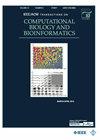circ2DGNN: circRNA-Disease Association Prediction via Transformer-Based Graph Neural Network
IF 3.4
3区 生物学
Q2 BIOCHEMICAL RESEARCH METHODS
IEEE/ACM Transactions on Computational Biology and Bioinformatics
Pub Date : 2024-10-30
DOI:10.1109/TCBB.2024.3488281
引用次数: 0
Abstract
Investigating the associations between circRNA and diseases is vital for comprehending the underlying mechanisms of diseases and formulating effective therapies. Computational prediction methods often rely solely on known circRNA-disease data, indirectly incorporating other biomolecules' effects by computing circRNA and disease similarities based on these molecules. However, this approach is limited, as other biomolecules also play significant roles in circRNA-disease interactions. To address this, we construct a comprehensive heterogeneous network incorporating data on human circRNAs, diseases, and other biomolecule interactions to develop a novel computational model, circ2DGNN, which is built upon a heterogeneous graph neural network. circ2DGNN directly takes heterogeneous networks as inputs and obtains the embedded representation of each node for downstream link prediction through graph representation learning. circ2DGNN employs a Transformer-like architecture, which can compute heterogeneous attention score for each edge, and perform message propagation and aggregation, using a residual connection to enhance the representation vector. It uniquely applies the same parameter matrix only to identical meta-relationships, reflecting diverse parameter spaces for different relationship types. After fine-tuning hyperparameters via five-fold cross-validation, evaluation conducted on a test dataset shows circ2DGNN outperforms existing state-of-the-art(SOTA) methods.circ2DGNN:通过基于变换器的图神经网络进行 circRNA-疾病关联预测。
研究 circRNA 与疾病之间的关联对于理解疾病的内在机制和制定有效疗法至关重要。计算预测方法通常仅依赖于已知的 circRNA-疾病数据,通过计算基于这些分子的 circRNA 和疾病相似性,间接纳入其他生物分子的影响。然而,这种方法存在局限性,因为其他生物大分子在 circRNA 与疾病的相互作用中也发挥着重要作用。为了解决这个问题,我们构建了一个综合的异构网络,其中包含人类 circRNA、疾病和其他生物分子相互作用的数据,从而开发出一种新型计算模型 circ2DGNN,它建立在异构图神经网络的基础上。circ2DGNN直接将异构网络作为输入,通过图表示学习获得每个节点的嵌入表示,用于下游链接预测。circ2DGNN采用了类似变形器的架构,可以计算每条边的异构关注度得分,并进行信息传播和聚合,利用残差连接增强表示向量。它唯一适用于相同元关系的相同参数矩阵,反映了不同关系类型的不同参数空间。通过五倍交叉验证对超参数进行微调后,在测试数据集上进行的评估显示,circ2DGNN优于现有的最先进(SOTA)方法。
本文章由计算机程序翻译,如有差异,请以英文原文为准。
求助全文
约1分钟内获得全文
求助全文
来源期刊
CiteScore
7.50
自引率
6.70%
发文量
479
审稿时长
3 months
期刊介绍:
IEEE/ACM Transactions on Computational Biology and Bioinformatics emphasizes the algorithmic, mathematical, statistical and computational methods that are central in bioinformatics and computational biology; the development and testing of effective computer programs in bioinformatics; the development of biological databases; and important biological results that are obtained from the use of these methods, programs and databases; the emerging field of Systems Biology, where many forms of data are used to create a computer-based model of a complex biological system

 求助内容:
求助内容: 应助结果提醒方式:
应助结果提醒方式:


